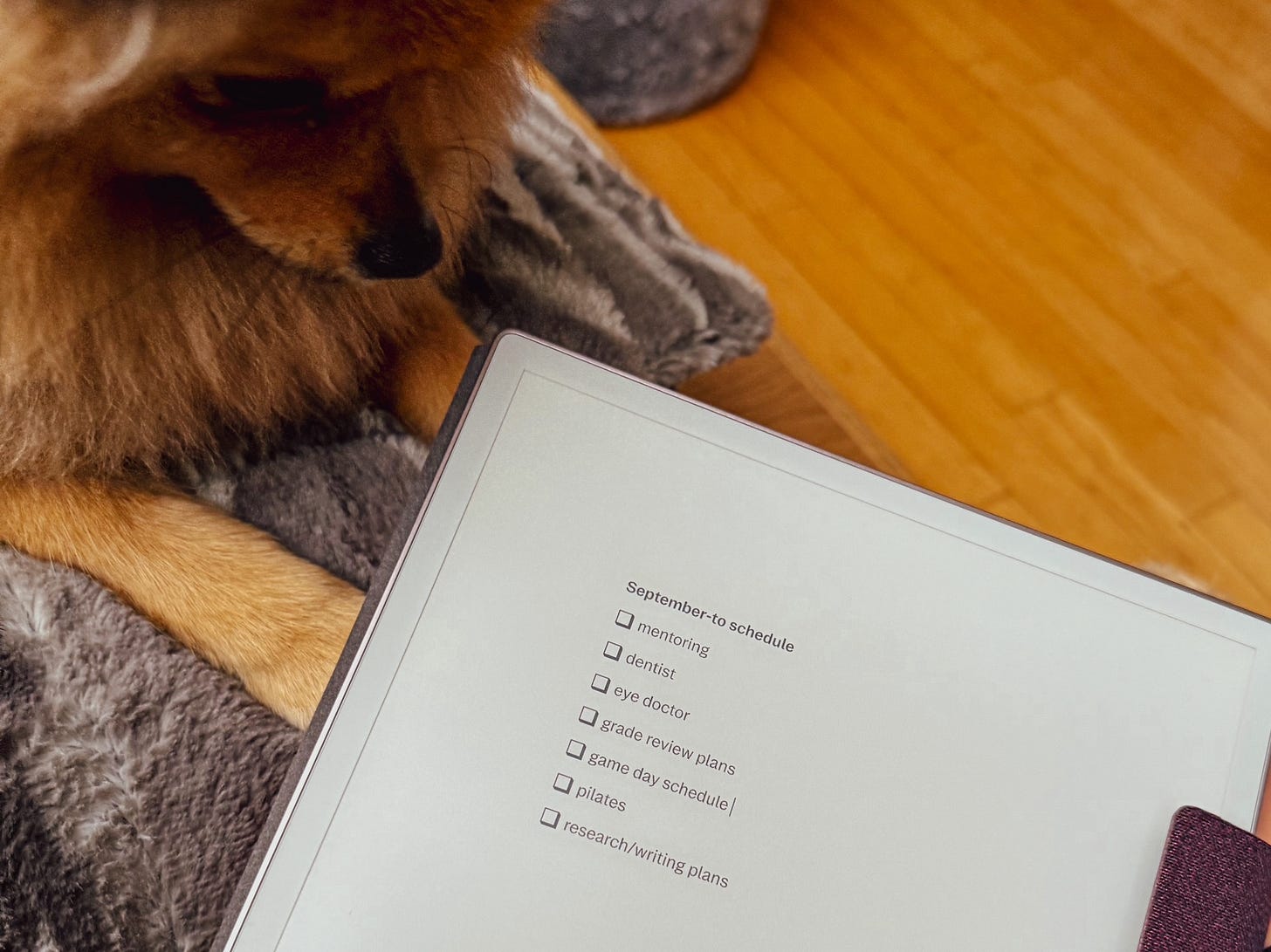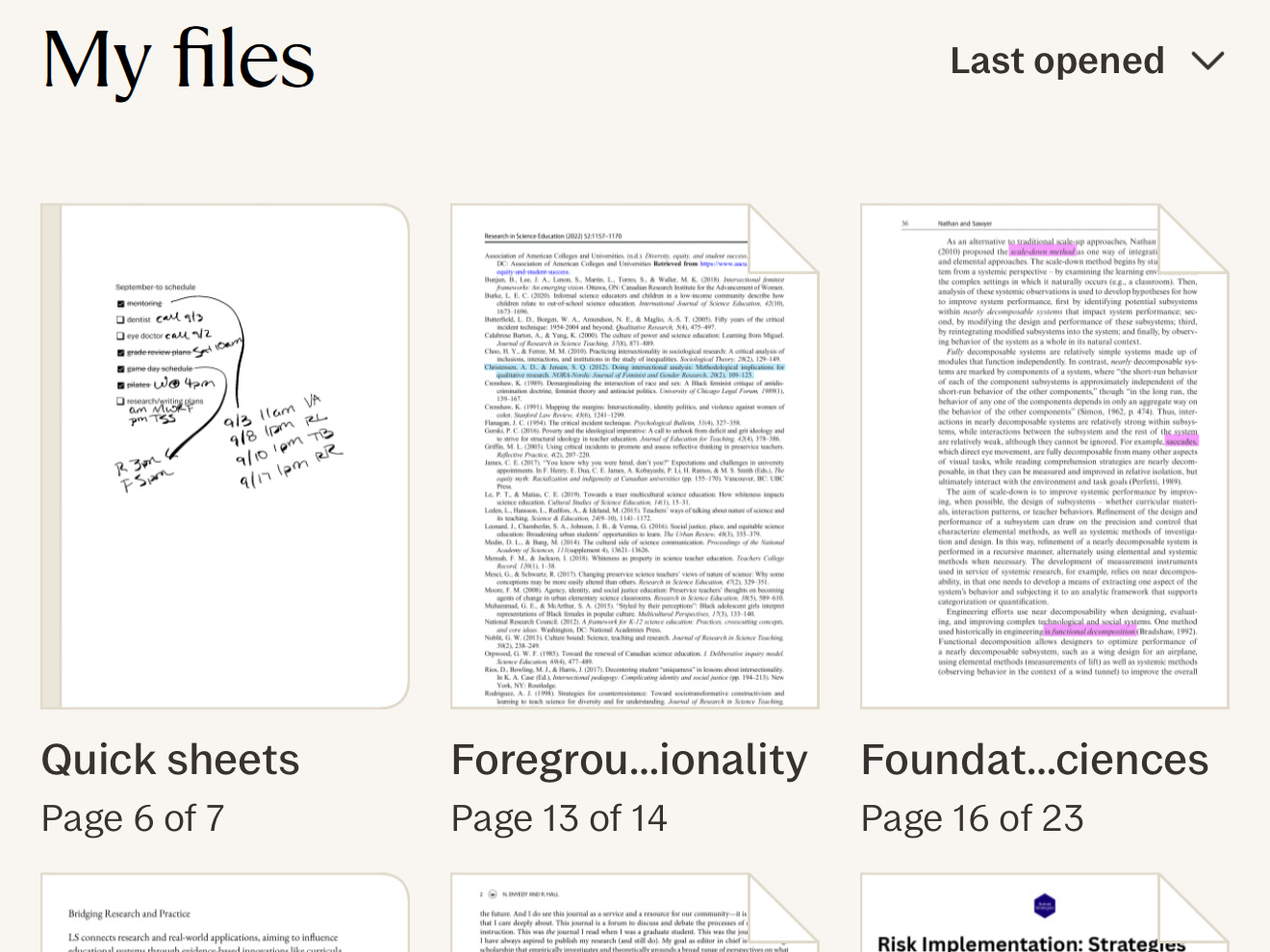From Scribbles to Structure

My notebooks used to be a jumble. Half-finished lists, arrows pointing in every direction, words squeezed into corners, sticky notes stacked on top of each other. I’ve always loved paper notebooks and probably always will. There’s something about the feel of pen (or pencil) on paper that nothing else can replace. But as much as I love them, I also know the truth: they sometimes leave me scattered. My ideas can end up living in scribbles, not a structure I can actually use.
A while back, I realized I had three half-used notebooks on my desk, four different scheduling apps open on my phone, and sticky notes stuck everywhere. No wonder I felt scattered. So I decided to try the reMarkable notebook to keep myself a tad more organized. Not just to add another gadget, but to hopefully slow me down, help me focus, and pull all those scribbles into something that makes sense. (And just to be clear, this isn’t sponsored or anything. It’s simply what’s been working for me lately.)
File Under Maybe is a reader-supported publication. To receive new posts and support my work, consider becoming a free or paid subscriber.
A Place to Catch Everything
One of the hardest parts of balancing work, school, parenting, and life in general is the sheer volume of things competing for mental space. I’ll wake up in the middle of the night worrying about a paper and also remembering my son needs crepes made to bring to for French club the next day.
The Paper Pro has become my mental inbox. I use it to catch everything: project outlines, schedules, and even quick sketches of ideas that would’ve been lost on the back of an envelope. Unlike my phone, it doesn’t tempt me into email or social media. That matters. It keeps me writing instead of scrolling.
Takeaway: A clean, distraction-free space for capturing details helps create mental calm.
Turning Chaos Into Clarity
Dumping thoughts is helpful, but productivity comes from shaping them. This is where the device shines:
- Mind maps help me untangle complex projects
- Highlighting research papers so I can pull quotes and references quickly
- Daily planners balance client work, family life, and self-care without overbooking
By drawing boxes around related ideas, color-coding them, and then flipping into planner mode, I move from overwhelm to order. That’s where clarity emerges.
Takeaway: Structure is what helps turns notes into action.
Writing That Feels Different (And The Same)
As someone who writes constantly, I didn’t expect the tactile feel to matter so much. But it does. Typing keeps me in document mode, while handwriting on the Paper Pro slows me just enough to process what I’m thinking. When I need speed, the Type Folio keyboard snaps on and lets me move quickly. But writing on it feels just as nice as writing it any paper notebook I’ve ever had.
And later, my handwritten scribbling converts into clean, editable text. For me, it’s the closest I’ve come to getting the best of both worlds: the satisfaction of writing on paper, with the clarity and searchability of digital notes.
Takeaway: Slower writing leads to deeper thinking.
Here’s what that looked like in practice as I was getting ready for the month:

From Handwriting to Daily Rhythm
Here’s where the Paper Pro surprises me most. It can actually read my handwriting. And as you can see above, my handwriting isn’t neat. It’s fast, sometimes slanted, and often squeezed into page corners. Yet when I convert it, the device almost always gets it right. That means my scribbled meeting notes or a rushed to-do list become clear text I can search or share.
I’ve started using this feature for daily planning. In the morning, I’ll handwrite a rough schedule with writing blocks, reminders about errands, or whatever else. Then I’ll let the Paper Pro translate it. Suddenly my schedule doesn’t just live in my head or on sticky notes. It’s legible and editable. And synced into my workflow.
The shift is pretty striking when you see it side by side:

Takeaway: Technology that adapts to your quirks makes organization effortless.
One Hub for Work and Home
I tried keeping my work, school, and personal life in separate systems. It never worked. Instead, the Paper Pro acts as one integrated hub:
- Meeting notes can sit next to my grocery list (or in designated folders)
- Workshop outlines share space with to-do lists
- Family schedules overlap with project timelines
That integration doesn’t make things messier. For me, it makes them more manageable. Everything has a place… and I’m not switching between ten different apps or stacks of paper.
Takeaway: Integration should lead to less chaos, not more.
The Ritual That Changed Everything
The most surprising benefit? Editing my notes after the fact. At the end of each day, I spend ten minutes tidying what I captured, rewriting messy sections, boxing key takeaways, and highlighting what actually matters. It’s a small ritual, but it forces me to slow down and clarify. Reflection is the real productivity hack.
And it looks something like this when I finish the day:

Takeaway: Productivity isn’t about speed, it’s about reflection.
What I’ll Carry Forward
The reMarkable hasn’t magically given me more hours in the day. But it has shifted how I use the hours I have. I still keep paper notebooks around. I love them too much to ever let them go. But I can’t imagine going back to relying on them alone.
One of the best parts of this system is that my notes don’t just live on the tablet. They sync across devices, so whether I’m on my laptop or scrolling through my phone… everything is there waiting for me. It means I can capture ideas in the moment, tidy them later, and still pull them up when I’m away from my desk.

Instead of scattering my energy across tools, I now have something that:
- Catches the chaos of ideas, tasks, and notes
- Transforms that chaos into structure
- Lets me write with both speed and reflection
- Keeps my multiple roles from spilling over into overwhelm
If you’re balancing client work, home responsibilities, or creative projects, this isn’t just a gadget. It’s a practice of slowing down to think clearly and then speeding up to act with focus.
That’s the kind of productivity that finally feels sustainable.




